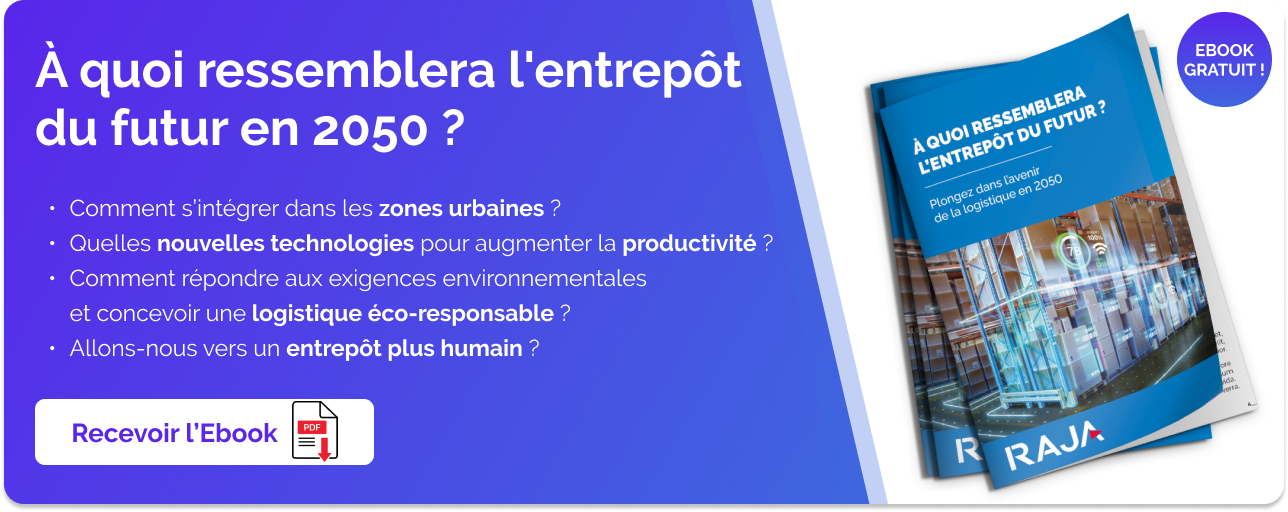Logistics 5.0 marks a new era in which artificial intelligence and technological innovation are profoundly transforming the supply chain. Smarter, more sustainable and more resilient, it promises to optimise every link in logistics operations, from storage to delivery.
But how is AI revolutionising the sector in practice? What benefits can we expect, and what challenges do we need to anticipate? Dive into this strategic evolution that is redefining the standards of modern logistics.
A simple definition of logistics 5.0
Logistics 5.0 is a continuation of Industry 5.0, also known as the Fifth Industrial Revolution. This concept, developed by the European Commission, aims to transform industrial models through technological innovation. Its aim is twofold: to make supply chains more resilient to external hazards, while incorporating a sustainable dimension.
In this new era, the democratisation of artificial intelligence (AI) is playing a key role in the transformation of transport and logistics businesses. AI not only makes it possible to optimise flows, but also to rethink all processes to make them more efficient and environmentally friendly.
Three pillars define logistics 5.0:
- Technology: using the data available within the company to develop AI algorithms capable of improving logistics performance. This approach is accompanied by complementary technologies such as image processing systems, IoT sensors and autonomous and collaborative robots.
- Efficiency: thanks to artificial intelligence, logistics processes are optimised to reduce human error and improve productivity.
- Sustainability: innovation is used to promote corporate social responsibility (CSR). The aim is to reduce the environmental impact of logistics operations while improving working conditions for warehouse operators.
Logistics 5.0 marks a transition to a more intelligent, agile and sustainable model, where people and technology work together to meet the challenges of tomorrow.
The promise of artificial intelligence in logistics 5.0
From anticipating needs and automating warehouses to improving quality control and optimising transport, here’s how AI is paving the way for more efficient, resilient logistics that are good for the planet.
Anticipating demand and logistics needs
One of the major assets of artificial intelligence in logistics 5.0 is its ability to anticipate demand with unprecedented accuracy. Using advanced algorithms, AI continuously analyses sales histories, market trends and seasonal events to predict fluctuations in demand.
This predictive approach enables companies to plan their production, supply and labour requirements more effectively. By adjusting stocks as closely as possible, they avoid over-stocking, which ties up capital and generates unnecessary costs, as well as stock-outs, which can have an impact on customer satisfaction and sales.
At a time when supply chains are increasingly exposed to unpredictable external events (global conflicts, changes in consumer habits, natural disasters, etc.), this ability to anticipate becomes an essential strategic lever.
By relying on AI, logistics companies are becoming more agile and resilient, enabling them to respond better to market expectations while optimising the profitability of the entire supply chain.
Automating stock management and order preparation
Logistics 5.0 and AI are revolutionising stock management and order preparation by integrating automated systems capable of operating in complete autonomy. Thanks to robots connected to AI algorithms, it is now possible to automate key tasks such as storing goods, taking inventory or picking products from the warehouse.
AI doesn’t work alone: it synchronises with an ecosystem of innovative technologies, such as autonomous mobile robots, self-propelled forklifts or even drones dedicated to stocktaking. This automation considerably reduces handling requirements, making tasks less arduous for operators while speeding up logistics processes.
By optimising the management of human resources in warehouses, AI also helps to minimise warehousing and order-picking errors. The result: smoother, more reliable logistics capable of meeting the market’s growing demands for speed and precision.
Improving quality control
Artificial intelligence is making a significant contribution to quality control in Logistics 5.0, thanks in particular to Machine Vision technology. This system, based on image analysis and automatic learning, enables real-time monitoring of movements in the warehouse and the precise tracking of operators as they prepare orders.
Thanks to this intelligent flow management, it is possible to guarantee total traceability of goods at every stage of the logistics process. By identifying any errors – whether due to mishandling, incorrect storage location or picking confusion – AI enables rapid intervention to correct these anomalies and improve the overall quality of operations.
This technology contributes to making shipments more reliable, reducing customer returns due to preparation errors and optimising the efficiency of warehouse teams. By enhancing the accuracy and traceability of logistics flows, AI becomes a key lever for guaranteeing rigorous quality control and improving customer satisfaction.
Predicting maintenance requirements
Thanks to AI, logisticians can also identify faults in machines and technological systems in the warehouse, so as to anticipate their maintenance requirements. This reduces downtime, and therefore potential delays in order preparation.
Optimising the goods transport phase
Artificial intelligence plays a key role in optimising goods transport by modelling the most efficient routes. By analysing multiple parameters in real time (traffic conditions, weather, regulatory constraints and fuel consumption), AI algorithms canoptimise routes for faster, greener deliveries.
This approach has a dual advantage: it reduces the transport sector’s carbon footprint while optimising logistics costs. By minimising the distances travelled and avoiding inefficient journeys, companies can significantly reduce their fuel consumption, CO2 emissions and the costs associated with transporting goods.
A concrete example of this innovation is the Lithuanian haulier Girteka, which uses data from its 9,000 connected lorries. By analysing this information using AI algorithms, the company has been able to reduce its transport times by 10% and cut its fuel consumption and CO2 emissions by around 7%.
These are just some of the benefits of 5.0 logistics that make you want to look to the future!
The challenges of 5.0 logistics to bear in mind
5.0 logistics technology may be alluring, but it is not without its challenges. Here are the three challenges logisticians will have to face when implementing AI-powered systems in their warehouses.
Centralising all the necessary data
Artificial intelligence relies on the exploitation of vast volumes of data to feed its algorithms and generate relevant predictions. In this era of Big Data, centralising all the necessary information is becoming a fundamental challenge.
To achieve this, companies need to put in place a centralised platform capable of collecting, structuring and harmonising data from all available information systems and sources. This single database constitutes a reliable and usable ‘source of truth’, without which algorithms run the risk of being ineffective or biased.
Data reliability
Having a large volume of data is not enough:it must alsobe reliable and usable. Incorrect, incomplete or poorly verified information can distort predictions and generate errors, or even ‘hallucinations’ on the part of the AI, leading to inappropriate decisions.
To guarantee optimum data quality, companies need to rely on specialist profiles, such as data analysts and data scientists. Their role is to check, clean and structure the data before it is fed into the artificial intelligence algorithms. This expertise is becoming an essential link in the success of Logistics 5.0.
Training people to use the new technologies
Beyond data and algorithms, logistics 5.0 is profoundly transforming the daily lives of logistics professionals. Adopting these new technologies requires teams to develop their skills, so that they can use them effectively and take full advantage of them.
This paradigm shift in warehouses requires rigorous change management. Employees need to be supported as they learn to use these tools, their benefits need to be explained, and they need to be reassured about their role in this new technological ecosystem. Appropriate training is the key to making 5.0 logistics a real driver of performance, with no internal brakes or resistance.
With the rise of artificial intelligence, logistics 5.0 marks the beginning of a more agile, sustainable and efficient era. Are you ready to rise to the challenges of this technological revolution?
















